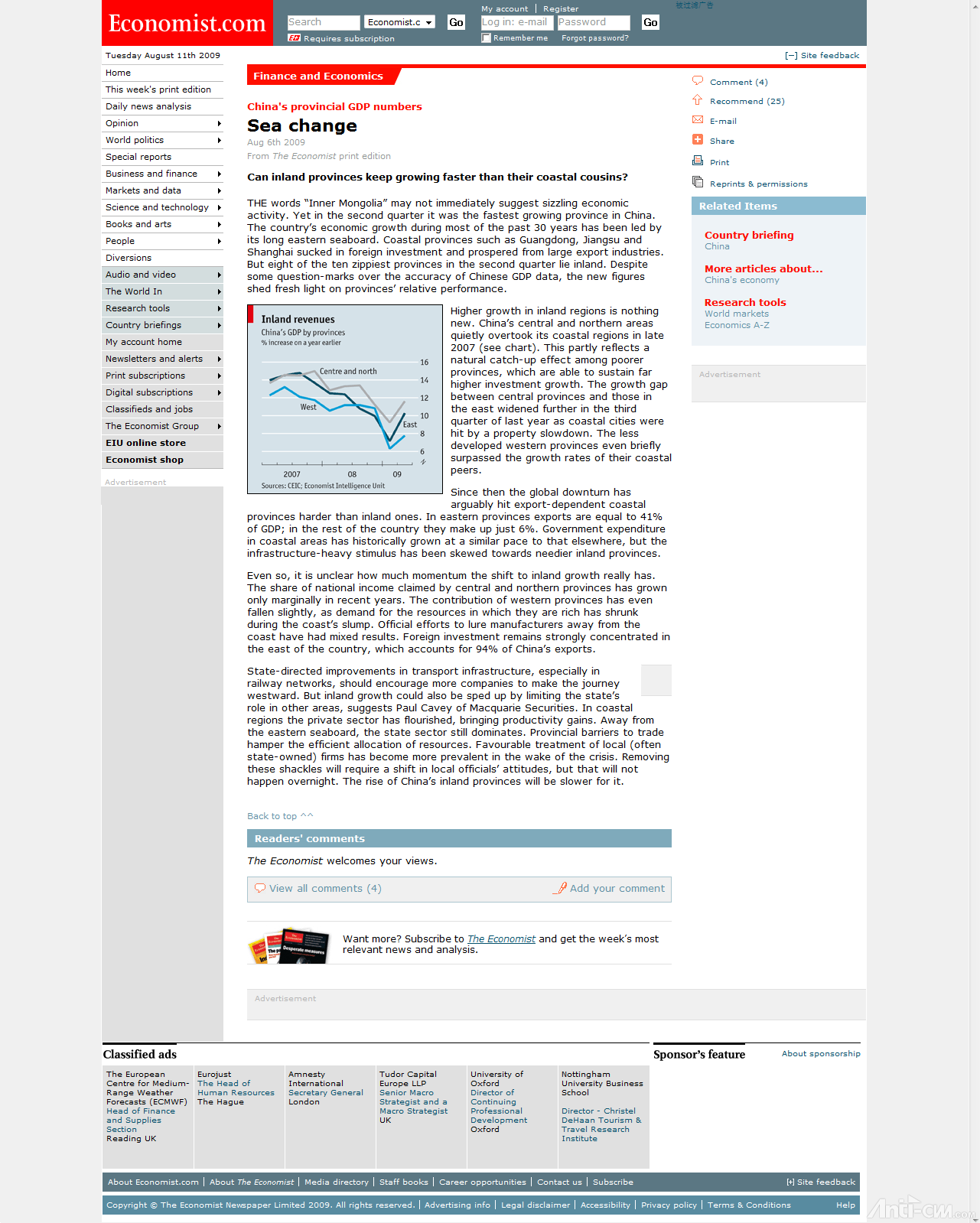|
|
China's provincial GDP numbers
Sea change
Aug 6th 2009
From The Economist print edition
Can inland provinces keep growing faster than their coastal cousins?
THE words “Inner Mongolia” may not immediately suggest sizzling economic activity. Yet in the second quarter it was the fastest growing province in China. The country’s economic growth during most of the past 30 years has been led by its long eastern seaboard. Coastal provinces such as Guangdong, Jiangsu and Shanghai sucked in foreign investment and prospered from large export industries. But eight of the ten zippiest provinces in the second quarter lie inland. Despite some question-marks over the accuracy of Chinese GDP data, the new figures shed fresh light on provinces’ relative performance.

Higher growth in inland regions is nothing new. China’s central and northern areas quietly overtook its coastal regions in late 2007 (see chart). This partly reflects a natural catch-up effect among poorer provinces, which are able to sustain far higher investment growth. The growth gap between central provinces and those in the east widened further in the third quarter of last year as coastal cities were hit by a property slowdown. The less developed western provinces even briefly surpassed the growth rates of their coastal peers.
Since then the global downturn has arguably hit export-dependent coastal provinces harder than inland ones. In eastern provinces exports are equal to 41% of GDP; in the rest of the country they make up just 6%. Government expenditure in coastal areas has historically grown at a similar pace to that elsewhere, but the infrastructure-heavy stimulus has been skewed towards needier inland provinces.
Even so, it is unclear how much momentum the shift to inland growth really has. The share of national income claimed by central and northern provinces has grown only marginally in recent years. The contribution of western provinces has even fallen slightly, as demand for the resources in which they are rich has shrunk during the coast’s slump. Official efforts to lure manufacturers away from the coast have had mixed results. Foreign investment remains strongly concentrated in the east of the country, which accounts for 94% of China’s exports.
State-directed improvements in transport infrastructure, especially in railway networks, should encourage more companies to make the journey westward. But inland growth could also be sped up by limiting the state’s role in other areas, suggests Paul Cavey of Macquarie Securities. In coastal regions the private sector has flourished, bringing productivity gains. Away from the eastern seaboard, the state sector still dominates. Provincial barriers to trade hamper the efficient allocation of resources. Favourable treatment of local (often state-owned) firms has become more prevalent in the wake of the crisis. Removing these shackles will require a shift in local officials’ attitudes, but that will not happen overnight. The rise of China’s inland provinces will be slower for it.

|
|